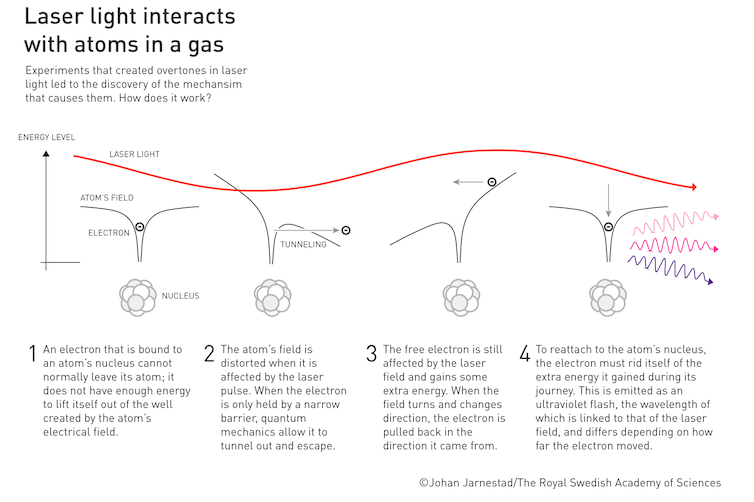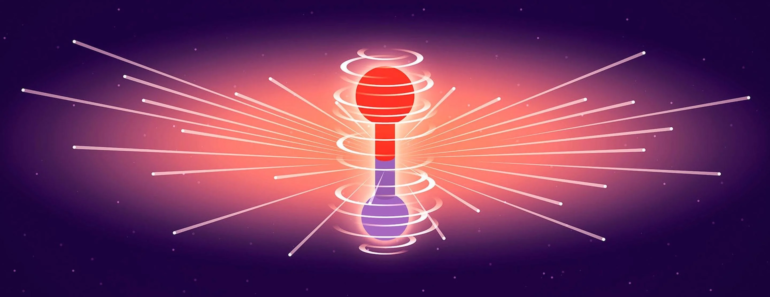Electrons moving around in a molecule might not seem like the plot of an interesting movie. But a group of scientists will receive the 2023 Nobel Prize in physics for research that essentially follows the movement of electrons using ultrafast laser pulses, like capturing frames in a video camera.
However, electrons, which partly make up atoms and form the glue that bonds atoms in molecules together, don’t move around on the same time scale people do. They’re much faster. So, the tools that physicists like me use to capture their motion have to be really fast – attosecond-scale fast.
One attosecond is one billionth of a billionth of a second (10-18 second) – the ratio of one attosecond to one second is the same as the ratio of one second to the age of the universe.
Attosecond pulses
In photography, capturing clear images of fast objects requires a camera with a fast shutter or a fast strobe of light to illuminate the object. By taking multiple photos in quick succession, the motion of the object can be clearly resolved.
The time scale of the shutter or the strobe must match the time scale of motion of the object – if not, the image will be blurred. This same idea applies when researchers attempt to image the ultrafast motion of electrons. Capturing attosecond-scale motion requires an attosecond strobe. The 2023 Nobel laureates in physics made seminal contributions to the generation of such attosecond laser strobes, which are very short pulses generated using a powerful laser.
Imagine the electrons in an atom are constrained within the atom by a wall. When a femtosecond (10-15 second) laser pulse from a high-powered femtosecond laser is directed at atoms of a noble gas such as argon, the strong electric field in the pulse lowers the wall.
This is possible because the laser electric field is comparable in strength to the electric field of the nucleus of the atom. Electrons see this lowered wall and pass through in a bizarre process called quantum tunneling.
As soon as the electrons exit the atom, the laser’s electric field captures them, accelerates them to high energies and slams them back into their parent atoms. This process of recollision results in creation of attosecond bursts of laser light.

A laser’s electric field allows electrons to escape from the atom, gain energy and then release energy as they’re reabsorbed back into the atom.
Johan Jarnestad/The Royal Swedish Academy of Sciences, CC BY-NC-ND
Attosecond movies
So how do physicists use these ultrashort pulses to make movies of electrons at the attosecond scale?
Conventional movies are made one scene at a time, with each instant captured as a frame with video cameras. The scenes are then stitched together to form the complete movie.
Attosecond movies of electrons use a similar idea. The attosecond pulses act as strobes, lighting up the electrons so researchers can capture their image, over and over again as…



